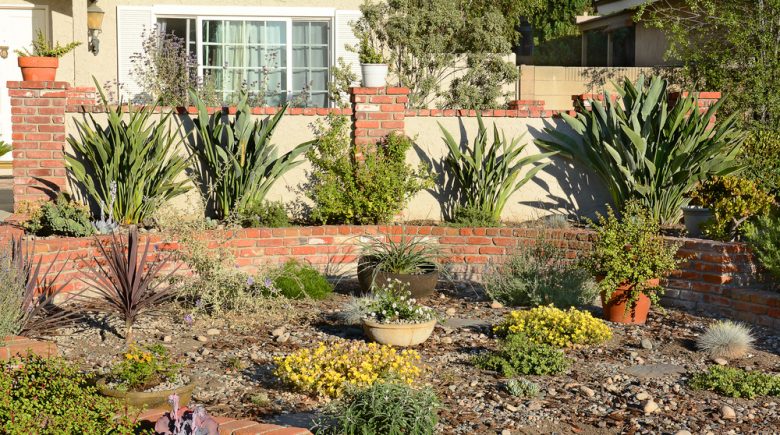One of the integral part of our lives, one that has saved many lives living on the earth, is water. Without water, one cannot survive for more than a few days. And without clean water for survival, one cannot live disease-free or have a good quality of life.
Water is required everywhere for our daily needs, from preparing food to washing clothes. Yet we waste it and abuse it to the extent that any good source of clean water is becoming scarce now-a-days. Preventing rain water from soaking into the ground, overloading sewage treatment plants and causing erosion on land are some the negative affects of water abuse. Some experts believe that water will become the number one crisis of humanity in the future far beyond the energy crisis. In order to prevent these from happening, we need to conserve water. This means, our houses should be built in ways that can preserve water from natural resources at all time and have the ability to reuse it whenever needed.
Home improvement programs in today’s world offer wide and large the techniques and methods to save water during as early as planning phase. There are many ideas to build water conservation systems that cost no more than standard construction and some of them actually reduce your building cost to a surprising level. An ideal home is where you will find the frugal use of water. With techniques and resources provided, these homes will reduce water consumption by as much as 75 percent and at the same time contribute to the environment by reducing the burden on sewage treatment plants.
There are many ways that one can preserve water. One such way is by collecting rainwater off the roof and using it efficiently indoors and outdoors. This requires that the house be built in a particular manner or have equipment necessary to harvest rainwater. The home’s landscape can also be designed to absorb rainwater thus reducing runoff to a significant level.
Conserving water is not just about saving water for future use but reducing energy consumption as well. When you are conserving water, you are using less hot water and therefore lowering your energy bills. Water heating can be the biggest expense on your bill if you are careless. You may have experienced this before. The easiest thing to do here is to install water efficient plumbing systems and appliances. For example, by switching from old toilets that use 3 to 7 gallons of water per flush to new toilets using 1.6 gallons, you will be saving a lot of water as well as money. You can do significantly better changes to other parts of the house to preserve water as well. As you seek to save water, pay attention to the performance of these plumbing fixtures. In some cases, you may have to replace the entire unit and not just the parts to obtain better performance. Also, in the quest of saving water, you cannot just stay with conventional toilets. Think beyond. Look for ways to improve functionality by maintaining the fixtures regularly.
Shower is another area where you have the opportunity to save water and environment in general. New showers that are sold today use significantly less water than older ones and many low flow shower-heads contribute to these savings. So, when you are working on a home improvement project to conserve water, take into consideration the idea of replacing shower-heads and any associated parts with efficient ones. The best models have sophisticated designs that might seem like using 5 gallons but actually use as little as 1.5 gallons. Saving water can also be extended to faucets and sinks. Adding an aerator to the faucet will save you a lot of water and make the entire system look stylish as well. In the kitchen and bathrooms, instead of reducing the low rate of faucet, install a faucet with low gpm. Better yet, buy something that comes with foot or knee control to take your water saving strategy to the next level. You can also choose water conserving washers, dryers and dishwashers with Energy star standards. Check with your local utility company if they sell one that has rebates along with water-efficient and energy-efficient features.
Now, let us take this water saving topic to your patio, lawn and garden. There are many regions in the US where outdoor landscaping consumes more water yet those regions receive less annual precipitation. And many experts believe that droughts will become more common in the areas that receive low rainfall if this trend continues into the future. It makes sense therefore to change your landscape design in case you live in any of the drought ridden places. For example, by changing green lawns to Xeriscaping, you will not only save water but spend a lot less on maintenance. Again, it is important to make sure that the dry-adapted landscaping is using only locally available native plants, so as to not risk pest problems. Even if you insist on grass lawn, use only those that make good environmental sense like drought-tolerant and native types. Other options to save water include but not limited to using harvested rain water and gray-water from the house.
When it comes to rainwater harvesting, rainwater typically collected off roofs, you will obtain a sufficient amount of water through large containers that can last for a year or more. This will also reduce pressure on water supply where there is water scarcity and at the same time reduce problems related to storm water runoff. Additionally, rainwater is usually free from contamination that frequently plague wells and other sources of water. Before you can harvest any water from rain, you need a system in place to collect water efficiently. The selection of the roofing part is essential to begin with. The first water collected needs to be flushed since roofs collect heavy metals, dust and other impurities. Additional water should be directed to the storage tank without wastage. Simple screens should be incorporated to prevent debris, leaves and other particles from the surroundings. Most health experts also suggest using treatment of rainwater prior to drinking or using at home.
Again, pay close attention to how and where there is a possibility that the rainwater may damage the surrounding areas such as inundated storm water drains and treatment plants or cause flooding around the house. Note that almost all impervious surfaces like parking lots, driveways or roadways fail to replenish our underground aquifers causing erosion and flooding. You can perform many home improvement tasks to prevent this. For example, avoid connecting multiple impervious surfaces by allowing gaps between them so that water seeps into the soil. Replace conventional asphalt driveway with porous pavement that not only is functional but looks stylish as well. Allow the surface water to flow off into your garden, lawn or any vegetated spaces where water can soak into the ground. Erosion is a major problem where there is a steep slope, so make sure to reduce the slope.
Last but not least, invest in features that offer discounts and deals either directly from the store or through your monthly bills. Building a house that is environmentally friendly may or may not exceed your budget much but the end result is always a positive one. Many of the strategies mentioned here that you consider as a waste of time or space benefits in one major way – health-wise. You are reducing the consumption water, reusing and recycling water for the greater good as well – your health.
One of the integral part of our lives, one that has saved many lives living on the earth, is water. Without water, one cannot survive for more than a few days. And without clean water for survival, one cannot live disease-free or have a good quality of life.
Water is required everywhere for our daily needs, from preparing food to washing clothes. Yet we waste it and abuse it to the extent that any good source of clean water is becoming scarce now-a-days. Preventing rain water from soaking into the ground, overloading sewage treatment plants and causing erosion on land are some the negative affects of water abuse. Some experts believe that water will become the number one crisis of humanity in the future far beyond the energy crisis. In order to prevent these from happening, we need to conserve water. This means, our houses should be built in ways that can preserve water from natural resources at all time and have the ability to reuse it whenever needed.
Home improvement programs in today’s world offer wide and large the techniques and methods to save water during as early as planning phase. There are many ideas to build water conservation systems that cost no more than standard construction and some of them actually reduce your building cost to a surprising level. An ideal home is where you will find the frugal use of water. With techniques and resources provided, these homes will reduce water consumption by as much as 75 percent and at the same time contribute to the environment by reducing the burden on sewage treatment plants.
There are many ways that one can preserve water. One such way is by collecting rainwater off the roof and using it efficiently indoors and outdoors. This requires that the house be built in a particular manner or have equipment necessary to harvest rainwater. The home’s landscape can also be designed to absorb rainwater thus reducing runoff to a significant level.
Conserving water is not just about saving water for future use but reducing energy consumption as well. When you are conserving water, you are using less hot water and therefore lowering your energy bills. Water heating can be the biggest expense on your bill if you are careless. You may have experienced this before. The easiest thing to do here is to install water efficient plumbing systems and appliances. For example, by switching from old toilets that use 3 to 7 gallons of water per flush to new toilets using 1.6 gallons, you will be saving a lot of water as well as money. You can do significantly better changes to other parts of the house to preserve water as well. As you seek to save water, pay attention to the performance of these plumbing fixtures. In some cases, you may have to replace the entire unit and not just the parts to obtain better performance. Also, in the quest of saving water, you cannot just stay with conventional toilets. Think beyond. Look for ways to improve functionality by maintaining the fixtures regularly.
Shower is another area where you have the opportunity to save water and environment in general. New showers that are sold today use significantly less water than older ones and many low flow shower-heads contribute to these savings. So, when you are working on a home improvement project to conserve water, take into consideration the idea of replacing shower-heads and any associated parts with efficient ones. The best models have sophisticated designs that might seem like using 5 gallons but actually use as little as 1.5 gallons. Saving water can also be extended to faucets and sinks. Adding an aerator to the faucet will save you a lot of water and make the entire system look stylish as well. In the kitchen and bathrooms, instead of reducing the low rate of faucet, install a faucet with low gpm. Better yet, buy something that comes with foot or knee control to take your water saving strategy to the next level. You can also choose water conserving washers, dryers and dishwashers with Energy star standards. Check with your local utility company if they sell one that has rebates along with water-efficient and energy-efficient features.
Now, let us take this water saving topic to your patio, lawn and garden. There are many regions in the US where outdoor landscaping consumes more water yet those regions receive less annual precipitation. And many experts believe that droughts will become more common in the areas that receive low rainfall if this trend continues into the future. It makes sense therefore to change your landscape design in case you live in any of the drought ridden places. For example, by changing green lawns to Xeriscaping, you will not only save water but spend a lot less on maintenance. Again, it is important to make sure that the dry-adapted landscaping is using only locally available native plants, so as to not risk pest problems. Even if you insist on grass lawn, use only those that make good environmental sense like drought-tolerant and native types. Other options to save water include but not limited to using harvested rain water and gray-water from the house.
When it comes to rainwater harvesting, rainwater typically collected off roofs, you will obtain a sufficient amount of water through large containers that can last for a year or more. This will also reduce pressure on water supply where there is water scarcity and at the same time reduce problems related to storm water runoff. Additionally, rainwater is usually free from contamination that frequently plague wells and other sources of water. Before you can harvest any water from rain, you need a system in place to collect water efficiently. The selection of the roofing part is essential to begin with. The first water collected needs to be flushed since roofs collect heavy metals, dust and other impurities. Additional water should be directed to the storage tank without wastage. Simple screens should be incorporated to prevent debris, leaves and other particles from the surroundings. Most health experts also suggest using treatment of rainwater prior to drinking or using at home.
Again, pay close attention to how and where there is a possibility that the rainwater may damage the surrounding areas such as inundated storm water drains and treatment plants or cause flooding around the house. Note that almost all impervious surfaces like parking lots, driveways or roadways fail to replenish our underground aquifers causing erosion and flooding. You can perform many home improvement tasks to prevent this. For example, avoid connecting multiple impervious surfaces by allowing gaps between them so that water seeps into the soil. Replace conventional asphalt driveway with porous pavement that not only is functional but looks stylish as well. Allow the surface water to flow off into your garden, lawn or any vegetated spaces where water can soak into the ground. Erosion is a major problem where there is a steep slope, so make sure to reduce the slope.
Last but not least, invest in features that offer discounts and deals either directly from the store or through your monthly bills. Building a house that is environmentally friendly may or may not exceed your budget much but the end result is always a positive one. Many of the strategies mentioned here that you consider as a waste of time or space benefits in one major way – health-wise. You are reducing the consumption water, reusing and recycling water for the greater good as well – your health.



